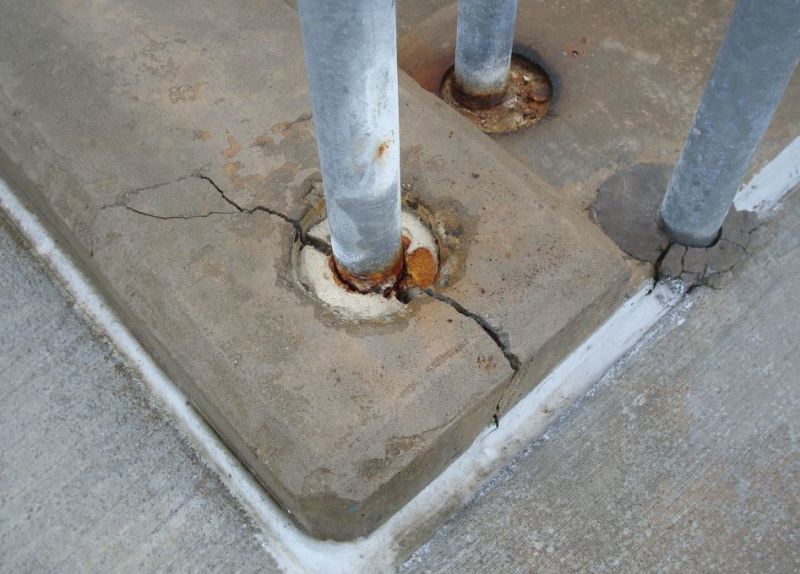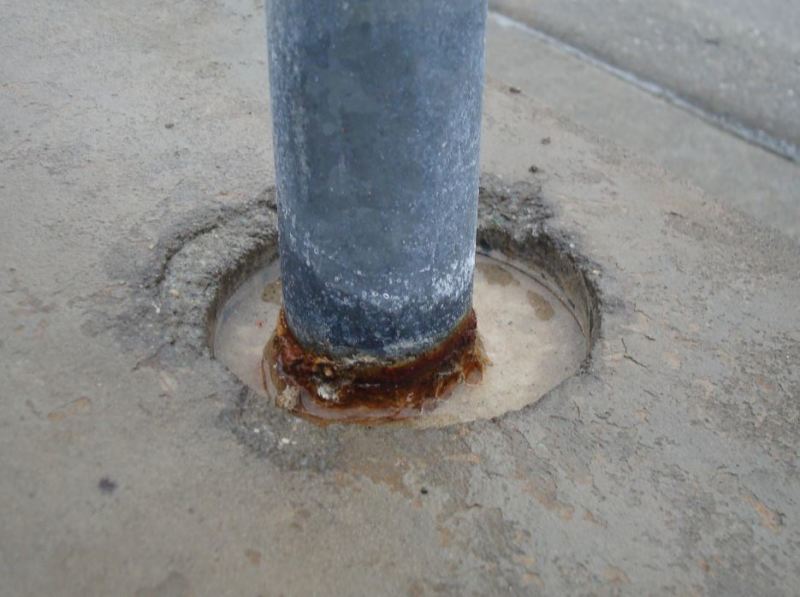Guastavino
Structural
I've never been a big fan of the Guardrail embedment detail for exterior applications. This is in a normal climate (some freeze/thaw, but not excessive). It is hot-dipped galvanized railing that is about 5 or 6 years old, embedded 5" into concrete below and grouted. I don't have the specs on what grout was used, but clearly this isn't working...anyone had success on a retrofit without replacement?
I'm thinking about having them chip out the grout, clean the steel and replace with an epoxy grout that isn't as permeable, then put a rain cover type piece over that to shed water...I don't like that much either, but it could be a temporary bandaid


I'm thinking about having them chip out the grout, clean the steel and replace with an epoxy grout that isn't as permeable, then put a rain cover type piece over that to shed water...I don't like that much either, but it could be a temporary bandaid



